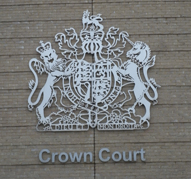Fraudsters target the poor and the vulnerable, according to an audit firm. KPMG’s Fraud Barometer, which measures fraud cases with losses of £100,000 or more reaching the UK courts, shows that the value of fraud prosecuted rose in 2015 to more than £732m, up from £717m in 2014. The average value of fraud per case also increased to £2.4m in 2015 compared to £2m in 2014. Two cases accounted for £253m of the total fraud recorded in 2015.
Criminals continued to prey on the most vulnerable in society, says KPMG. It found a rise in fraudsters targeting those in financial distress, offering a false safety net to dupe victims into surrendering both money and assets. Businesses and public organisations were also targeted, with fraudsters falsifying their financial position to extract funds or entice funding investment, leading to losses of £176m, a tenfold increase on 2014.
The barometer saw a marked increase in fraudsters targeting individuals and families, particularly those in financial distress, stealing £156m; in 2014 when just £38.5m was lost by vulnerable victims.
In one case criminals preyed on victims struggling to pay their mortgage, offering to buy their homes and lease them back, enabling them to stay in their properties. In collusion with a crooked surveyor, the properties were re-mortgaged for an inflated value in the names of unsuspecting nominees, and the loans were then defaulted upon. While financial institutions were subject to losses of £111m, the human cost was also significant as many of those taken in by the scam lost the homes they thought they had saved. In another case the perpetrator ran two companies offering debt restructuring and advice services to help people manage and reduce their debts. However the fraudster diverted the payment received from victims into a personal bank account, leaving the firm’s customers and creditors out of pocket to the tune of £900,000.
Hitesh Patel, UK Forensic Partner at KPMG, said: “Criminals hiding behind a veil of respectability are preying on the poor, pushing people further into poverty. After appearing to offer victims a way to escape their debt, they have then proceeded to take what little the victims had left. With interest rate rises possible in 2016, such debt restructuring schemes are, sadly, likely to remain popular with fraudsters. People struggling with their rising living costs and who are naturally looking for help will be especially vulnerable to falling into the webs woven by such fraudsters.”
Businesses were also persistently targeted, with the private sector losing £332m in 2015 to scams. Criminals used tried and tested techniques, with some falsifying their finances to deceive victims and extract funds or entice funding investment. A failure to scrutinise prospective deals and third parties resulted in losses of £176m in 2015, a tenfold increase on 2014. In one large case, fraudsters deployed this technique to target financial institutions, securing fraudulent loans totalling £142m. The perpetrators allegedly presented a falsified order book as an asset, against which the large loans could be secured. The customers did not in fact exist.
Hitesh Patel said: “These worrying levels of losses to business have arisen simply as a result of not knowing the integrity and track record of who is on the other side of a deal. With detailed financial information available at the click of a button, it is easier than ever for criminals to falsify their finances. However, in many cases businesses can expose such fraudsters by deploying thorough checks and undertaking full due diligence. Businesses must raise their defences and put in place thorough checks around counterparties – the cost of ignorance is one that businesses can readily minimise.”
Due diligence is just one tool organisations can use to defend against fraud, the auditors say. A culture of zero tolerance to fraud, an effective whistle-blowing line to enable employees to be the eyes and ears of an organisation, coupled with data analytics to detect fraudulent activity can often provide strong deterrence to would-be fraudsters.
Men are the most likely perpetrators of fraud, and were responsible for 85pc of all losses in 2015 (£619m). This is a significant increase on the previous year when male fraudsters were responsible for 60pc of the losses incurred (£431m). This increase has been driven by men over the age of 45, whose actions caused losses of £529m. More than half of these were the result of insider fraud, with employees and management abusing their position of trust to defraud employers, investors and customers of £303m.
In one case a solicitor defrauded £400,000 from the estates of deceased clients. The perpetrator ran a probate and domestic conveyancing business and abused his position to steal the money. His crimes were uncovered when his firm merged with another and the new management became suspicious.
Hitesh Patel added: “These fraudsters are often respected individuals in a position of trust, who have the opportunity and means to commit the fraud, making it hard for companies to easily detect the same. Employers must remain alert to tell-tale behaviours which can indicate a fraud is taking place, such as a refusal to relinquish mundane tasks, an aversion to independent review or obfuscation when questioned.”










